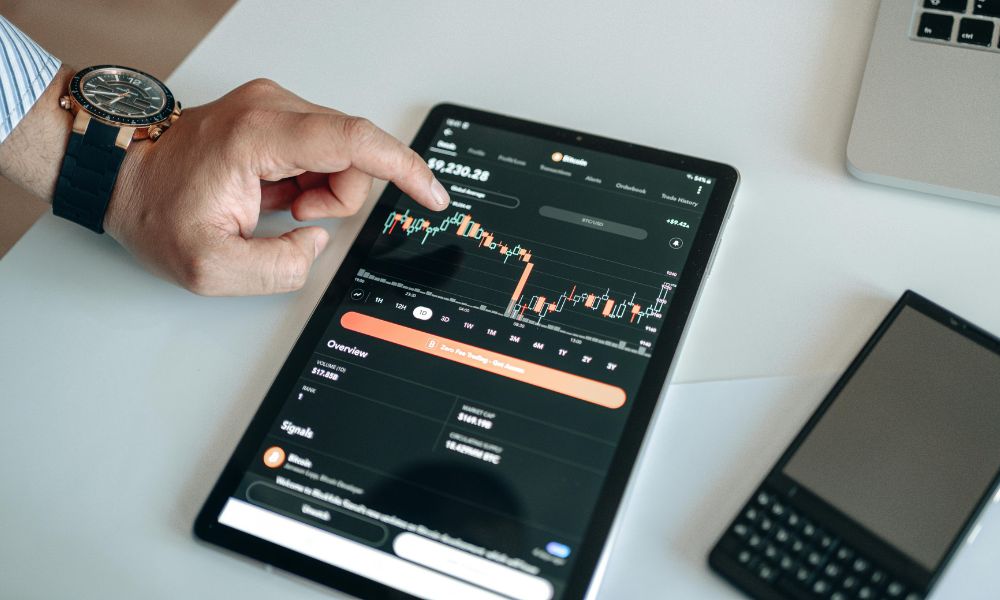The cost of influencer marketing isn’t one-size-fits-all. It depends on a mix of factors, from the creator’s audience size and platform to your campaign goals and content needs. While some influencers may post in exchange for a gifted product, others charge thousands per collaboration. Understanding what affects pricing helps brands make better decisions, avoid overspending, and get real value from every partnership.
In this guide, we’ll break down what brands typically pay for influencer marketing. You’ll learn how rates vary by platform and influencer tier, the hidden costs most teams overlook, and how to plan a budget that supports both reach and ROI.

What Is Influencer Marketing Cost Based On?
The cost of influencer marketing depends on several key variables. Before you plan your next campaign or set a budget, it helps to understand what actually drives pricing. Below are the four most common factors that affect how much you’ll pay when working with creators:
- Follower Count & Influencer Tier
- Platform Differences
- Content Type & Usage Rights
- Campaign Scope & Deliverables
We’ll cover each of these variables in more detail below, including follower tiers, platform differences, content formats, and campaign scope.
I. Average Influencer Rates by Tier
Influencer pricing can vary widely based on industry, platform, and deliverables. However, brands can use general benchmarks as a starting point for budgeting. Below is an overview of average rates across tiers, followed by a quick comparison table.
1. Nano Influencers (1K–10K followers)
Nano influencers are typically the most affordable tier. Many are open to collaborations in exchange for free products or small payments.
Average Cost per Post:
- Instagram: $50–$150
- TikTok: $75–$200
- Stories or short-form content: $25–$100
- Engagement Rate: 3%–8%
- Often accept gifted products or discounts instead of cash
Best for: Local campaigns, product seeding, UGC collection, niche targeting.
2. Micro Influencers (10K–50K followers)
Micro creators are known for strong engagement and niche relevance. They often charge modest rates while still delivering focused visibility.
Average Cost per Post:
- Instagram: $150–$500
- TikTok: $200–$800
- YouTube: $500–$1,500 (depending on production effort)
- Engagement Rate: 2%–5%
Best for: Growing brands, product launches, awareness-building, ambassador programs, performance tracking (e.g., with affiliate links).
3. Mid-Tier & Macro Influencers (50K–500K followers)
This tier brings broader reach and more polished content. Rates rise significantly with audience size, engagement, and creator experience.
Average Cost per Post:
- Instagram: $500–$2,000+
- TikTok: $800–$3,000+
- YouTube: $1,500–$5,000+ (for longer or sponsored videos)
- Engagement Rate: 1.5%–3%
Best for: Product launches, seasonal promotions, national campaigns, influencer whitelisting.
4. Mega/Celebrities (500K+ followers)
Creators in this range often require custom packages, agency negotiations, and detailed contracts. Many offer added value through press coverage or high-profile exposure.
Average Cost per Post:
- Instagram: $5,000–$25,000+
- TikTok: $5,000–$30,000+
- YouTube: $10,000–$50,000+
- Engagement Rate: 0.5%–2%
Best for: Global reach, brand prestige, and multi-platform visibility.
Influencer pricing comparison table for a quick reference:
| Influencer Tier | Follower Range | TikTok | YouTube | Common Use Cases | |
| Nano Influencers | 1K–10K | $50–$150 | $75–$200 | Rare/low cost | UGC, product testing, grassroots campaigns |
| Micro Influencers | 10K–50K | $150–$500 | $200–$800 | $500–$1,500 | Niche targeting, brand awareness, affiliate offers |
| Mid-Tier/Macro Influencers | 50K–500K | $500–$2,000+ | $800–$3,000+ | $1,500–$5,000+ | Launches, polished content, broad reach |
| Mega/Celebrity Influencers | 500K+ | $5,000–$25,000+ | $5,000–$30,000+ | $10,000–$50,000+ | Prestige campaigns, national/global visibility |

II. Cost of Influencer Marketing by Platform
Platform choice has a major impact on influencer pricing. Some platforms are more content-heavy and demand higher production effort, while others prioritize short-form formats or fast engagement. Here’s a breakdown of what brands can expect to pay based on platform.
1. Instagram Influencer Pricing
Instagram remains one of the most popular platforms for influencer marketing. Pricing depends on the format, grid posts usually cost more than Stories or Reels.
Average Rates:
- Story (single frame): $100–$400
- Post (image): $250–$2,000+
- Carousel: $350–$3,000+
- Reel (video): $300–$4,000+
Why Instagram costs vary:
- Feed posts require more effort to design and caption.
- Stories may include links, polls, or mentions.
- Reels have stronger viral potential and usually require video editing.
Best for: Visual products, fashion, wellness, beauty, lifestyle, brand building.
2. TikTok Influencer Pricing
TikTok content is short, authentic, and high-impact. Pricing here depends heavily on engagement and viral reach potential.
Average Rates:
- Single TikTok video: $250–$3,500+
- Duets or Stitch posts: $150–$1,000+
- Live streaming promos: $500–$5,000+
What affects TikTok rates:
- Editing skills and creative style.
- Engagement rate and For You Page visibility.
- Sound usage rights and trend potential.
Best for: UGC-style content, viral campaigns, Gen Z engagement, product demos.
3. YouTube Influencer Pricing
YouTube is the most time-consuming platform for creators, and rates reflect the long-form format, video editing, and scripting.
Average Rates:
- Shoutout in existing video: $500–$2,000+
- Dedicated video review: $1,000–$10,000+
- Unboxing or tutorial series: $2,000–$15,000+
Why YouTube costs more:
- Full video production is required.
- Content often stays live longer, offering extended value.
- Ideal for mid to late-funnel viewers.
Best for: Product education, tech, SaaS, B2B explainer content, in-depth reviews.
4. Bonus: Threads, X (Twitter), or LinkedIn
While not always part of primary influencer strategies, these platforms still offer value in niche sectors.
Threads & X (Twitter):
- Posts: $100–$500
- Threads/long-form: $250–$1,000
- Best for: Real-time engagement, events, or updates.
LinkedIn:
- Post: $250–$2,000
- Article or long-form video: $500–$5,000
- Best for: B2B thought leadership, SaaS, and professional services.

III. Content Type & Usage Rights
What kind of content you need, and how you plan to use it, plays a big role in pricing.
- Content format:
- Static image post → typically lower cost
- Story post → short-term visibility, lower price
- Video content (Reel, TikTok, YouTube) → highest cost
- Carousel or multi-post packages → priced higher due to effort
- Usage rights: Want to reuse influencer content on your website, email, or paid ads? You’ll likely need to license it. Most creators charge extra for:
- Whitelisting (running their content as an ad)
- Full licensing (using content in brand-owned assets)
- Exclusivity (limiting them from working with your competitors)
These terms should always be discussed up front and clearly stated in your agreement.
IV. Campaign Scope & Deliverables
The more complex your campaign, the more you should expect to invest. Rates scale based on:
- One-off posts vs. multi-post campaigns: A single shoutout might cost $100–$500. A structured campaign with a series of posts, Stories, and videos will add significantly to the cost.
- Product gifting vs. paid collaborations: Gifting may work for nano creators, but most micro or macro influencers will require payment, especially for set deliverables and deadlines.
- Full campaigns with reporting: If you’re working with influencers to gather UGC, track conversions, and repurpose content, you’re not just paying for posts, you’re investing in a content and distribution engine.
- Revisions and content approval: Some influencers include one round of feedback in their pricing, others may charge extra. Always clarify expectations upfront.
Types of Influencer Partnerships
The cost of influencer marketing depends heavily on the type of partnership you choose, because not all influencer campaigns are structured the same way. Each model comes with different expectations, deliverables, and compensation methods.
1. Sponsored Posts
A sponsored post is a paid collaboration where the influencer promotes your product or service on their platform. This is one of the most common and straightforward partnership types.
What’s included:
- A social post (photo, video, or Reel)
- Branded caption with tags and hashtags
- Potential exclusivity clause
Pricing factors:
- Platform used
- Audience size and engagement
- Content format (e.g., photo vs video)
Use when: You want direct promotion and measurable brand visibility.
2. Gifting / Product Seeding
In this low-cost model, influencers are sent products for free in exchange for potential coverage, though content isn’t guaranteed.
What’s included:
- Product only (no monetary compensation)
- Optional usage rights for content
Pricing factors:
- Cost of product, packaging, and shipping
- Influencer tier (nano influencers are more open to gifting)
Use when: Testing new audiences, collecting UGC, or operating with a limited budget.
3. Affiliate Campaigns
With affiliate marketing, influencers are paid based on the sales they generate using unique links or discount codes. This is a performance-based model.
What’s included:
- Discount code or referral link
- Commission per sale (typically 10–30%)
- Optional base rate
Pricing factors:
- Commission rate
- Product margin
- Influencer’s conversion potential
Use when: You want ROI-driven campaigns with low upfront investment.
4. Brand Ambassadorships
This is a long-term relationship where an influencer represents your brand over time, often with multiple deliverables and exclusivity.
What’s included:
- Ongoing content (monthly posts or videos)
- Event appearances or takeovers
- Product seeding and campaign integration
Pricing factors:
- Duration of agreement
- Number of deliverables
- Audience size and engagement
Use when: You want consistent brand representation and community-building.
5. UGC Creation Only
In this structure, influencers are hired to create content (photos or videos) that your brand uses in ads, websites, or social channels. The content isn’t always shared on the influencer’s feed.
What’s included:
- Short-form or long-form content (video, photo sets)
- Licensing rights for brand use
- No organic posting required
Pricing factors:
- Content format and quantity
- Usage rights and duration
- Creator’s experience and niche
Use when: You need quality content for paid ads or branded materials, not reach.

How to Find Influencers Within Your Budget
Finding the right creators doesn’t have to drain your marketing budget. With the right strategy and tools, you can discover high-performing influencers, even on a limited spend. Here’s how to stay cost-effective while still partnering with creators who deliver value.
💡For a full guide on how to find influencers for your brand, check out our step-by-step strategy.
Use Influencer Marketplaces (like Hypefy)
Platforms like Hypefy allow you to access pre-vetted influencers on Instagram and TikTok based on your campaign goals, region, and budget. Instead of manually searching and reaching out to creators one by one, marketplaces streamline discovery, outreach, and even payments.
Benefits:
- No long-term subscription fees
- Filter by niche, audience quality, and location
- Preview matches and only pay when you’re ready to launch
Tip: Try Hypefy’s Discovery Tool to view ready-to-hire creators already driving results in your space.
Focus on Engagement, Not Just Reach
An influencer’s follower count doesn’t always reflect performance. Many brands overpay for reach and overlook creators with highly active audiences. Engagement rate is a better indicator of trust and impact.
What to look for:
- Consistent comment activity (not just likes)
- Audience that matches your target demographic
- Influencers who spark conversation, not just views
Why it matters: A smaller influencer with a loyal audience often drives more clicks, conversions, or sign-ups than a larger but disengaged one.
Work with Nano & Micro Influencers
Nano (1K–10K followers) and micro (10K–50K) influencers typically offer better ROI for smaller campaigns. Their costs are lower, but their authenticity and connection with followers are often stronger.
Best use cases:
- Product launches or trials
- Regional or local campaigns
- Gathering user-generated content (UGC)
You can scale by working with 10–20 smaller creators instead of one large one, without compromising on quality.
Set Clear Briefs & Compensation Expectations
Misalignment on expectations can lead to delays, poor content, or extra costs. Always provide a clear brief upfront, outlining:
- Content format (Reels, Stories, UGC only, etc.)
- Timeline for delivery
- Compensation (fixed fee, gifting, affiliate payout, etc.)
- Usage rights and reposting permissions
Why it matters: The more clarity you give, the smoother your campaign, and the more likely you are to stay within budget.
Hidden Costs to Watch For
Even with a well-planned influencer marketing budget, some expenses can sneak up on you. These hidden costs often go unaccounted for, especially if it’s your first campaign. Here’s what to watch for so you don’t blow past your planned spend.
Agency Fees
If you’re working with an influencer agency or third-party campaign manager, be aware that service fees can range from 10% to 30% of the total campaign cost, or even more.
What’s included:
- Strategy and influencer sourcing
- Brief creation and communication
- Campaign reporting and optimization
Tip: Platforms like Hypefy help you skip the agency layer and manage everything in one place, reducing overhead.
Content Licensing & Usage Rights
Many brands assume they automatically “own” influencer content, but that’s rarely the case. You’ll need to negotiate usage rights if you plan to:
- Repost content on your website or socials
- Use influencer posts in paid ads or landing pages
- Whitelist influencer content for boosting
Typical costs:
- Basic reposting: free or $50–$150
- Paid usage or licensing: $100–$1,000+
- Whitelisting or ad rights: varies by duration and platform
Tip: Clarify content ownership and repurposing rights before the campaign begins.
Giveaways & Product Seeding
Free product campaigns aren’t always “free.” If you’re sending out multiple products for seeding or influencer gifting, factor in:
- Product cost
- Packaging and custom notes
- International shipping or customs
- Handling returns (if applicable)
Even a $50 item plus $15 shipping multiplied across 20 creators adds up fast.
Tip: Track ROI from gifting campaigns and only continue if content or visibility justifies the spend.

How to Budget for Influencer Campaigns
Whether you’re launching your first influencer initiative or scaling a multi-tiered strategy, having a clear budget structure helps you allocate spend efficiently. Below are three common campaign tiers and what to consider at each level, plus a simple budgeting framework to guide your planning.
💡Before setting a campaign budget, it’s smart to review proven influencer marketing strategies that align with your goals.
1. Starter Campaigns (UGC-Focused, Low-Spend)
These campaigns prioritize user-generated content, awareness, and early testing. Ideal for small brands, startups, or first-time influencer programs.
What to include:
- Nano and micro influencer fees (or product-only gifting)
- Shipping and packaging costs
- UGC repurposing rights (optional)
- Performance tracking tools (basic)
Typical budget range: $500–$2,000
Goal: Collect authentic content, test niche audiences, and evaluate performance with minimal spend.
2. Mid-Tier Campaigns (Affiliate/Ambassador Strategy)
Great for brands with products that convert well online. These campaigns blend reach, performance, and loyalty.
What to include:
- Micro and macro influencer payouts
- Affiliate tracking links or codes
- Performance bonuses or tiered commissions
- Brand collateral (custom landing pages, swipe files)
Typical budget range: $2,000–$10,000
Goal: Drive measurable ROI from mid-size creators while building long-term partnerships.
3. Full-Service Campaigns (Performance + Content)
For brands ready to scale, these campaigns integrate paid usage, performance targeting, and polished visuals.
What to include:
- Macro or celebrity influencer fees
- Content licensing and whitelisting
- Creative assets (photos, videos, scripts)
- Campaign manager, copywriter, or strategist fees
- Paid media to boost top-performing influencer content
Typical budget range: $10,000–$100,000+
Goal: Achieve both brand lift and direct response outcomes from high-performing creators.
How to Lower Costs Without Losing Quality
You don’t need a massive budget to run high-impact influencer campaigns. With the right strategies, brands can reduce spend without sacrificing authenticity, content quality, or results.
Work with Nano & Micro Influencers
Nano and micro creators often produce high-quality content at a fraction of the price of larger influencers. Their smaller audience size typically means higher engagement and stronger community trust.
Why it works:
- They’re more flexible with rates and often open to gifting
- Their content feels more relatable and authentic
- You can collaborate with multiple influencers at once for a broader reach
Tip: Focus on creators who already talk about products in your category, they’ll need less coaching and produce better content naturally.
Repurpose Influencer Content Across Channels
Instead of commissioning new content for every platform, repurpose what your influencers create. One well-shot Instagram Reel can become:
- A TikTok
- A website banner
- A paid ad
- A product feature clip in your email campaigns
Just make sure to secure content rights upfront to avoid additional usage fees later.
Use Tools That Cut Out Middlemen
Platforms like Hypefy automate creator discovery, outreach, payments, and ROI tracking in one place, without needing agencies or account managers.
Benefits:
- Save time and reduce coordination costs
- Preview real matches before paying
- Avoid platform or agency markups
Offer Value Beyond Money
Don’t underestimate what non-cash perks can do, especially for smaller creators. What you can offer:
- Exclusive access to product launches
- Discount codes for their followers
- VIP invites to your events or webinars
- Visibility via reposts on your brand’s socials
When creators feel like true partners, they’re often willing to negotiate.

Is Influencer Marketing Worth the Cost?
For most brands, influencer marketing is worth the investment, especially when it’s approached strategically. What sets this channel apart is its ability to drive trust-based engagement at scale. When a creator shares a product they genuinely like, their audience listens. This kind of recommendation can convert better than traditional ads, particularly in niche or high-trust categories like wellness, beauty, or tech.
In addition to visibility, influencer marketing doubles as a cost-efficient content engine. Instead of hiring a production crew, brands can work with creators who generate real-world visuals, unboxings, testimonials, and short-form video content that feels authentic and can be reused across social channels, ads, or product pages.
It also scales flexibly. Whether you’re working with nano influencers on a $1,000 gifting campaign or running a $50,000 product launch with paid placements and content licensing, there’s room to grow without overspending. The key is to focus on fit: creators who align with your product, audience, and goals tend to deliver the strongest returns.
That said, influencer marketing only works when the strategy is tight. If you’re chasing follower count without looking at engagement or audience quality, the cost can quickly outweigh the results. But with the right tools in place, including platforms like Hypefy that automate vetting, communication, and ROI tracking, influencer marketing remains one of the most cost-effective and scalable ways to drive real results.
💡Here’s how to maximize your influencer marketing ROI with the right tracking and benchmarks.
Final Thoughts
Influencer marketing can be as affordable or as expensive as you make it, what matters most is how well your strategy aligns with your goals and how efficiently you execute. With smarter planning, transparent pricing, and the right platform, you can cut unnecessary costs and still deliver high-quality campaigns that convert.
Whether you’re running your first campaign or optimizing your influencer program, the most important step is finding the right creators and managing the process from start to finish, without wasting time or budget.
Try Hypefy’s Influencer Hiring Platform for Social Media to discover Instagram and TikTok creators who align with your brand, preview real matches, and launch campaigns faster, no long-term contracts, no guesswork.



